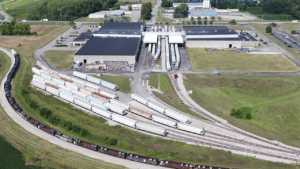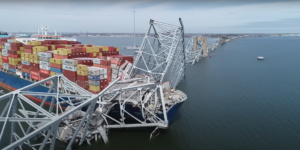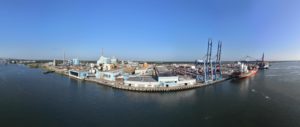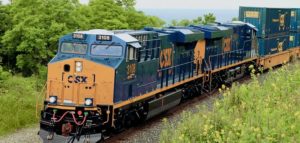TIGER V: Three ports receive funds
Written by Jenifer Nunez, assistant editorThe Port of Baltimore, Port of Tucson and Port of Oswego have received $16.5 million in U.S. Department of Transportation (DOT) Transportation Investment Generating Economic Recovery (TIGER) grants.
The Maryland Port Administration has been awarded $10,000,000 to expand the handling capacity at the Fairfield Marine Terminal at the Port of Baltimore.
“This public investment in the Port of Baltimore is about jobs, jobs, jobs,” Sen. Barbara Mikulski (D-MD) said. “From the dock workers who unload the ships to the manufacturers who rely on cargo transported by the ships, the port means jobs. Through construction jobs today, preparing the port for the bigger ships that will soon be sailing through the widened Panama Canal, we are supporting jobs tomorrow that will keep Maryland’s economy rolling.”
According to the Maryland Port Administration, the project will expand the handling capacity at the Fairfield Marine Terminal at the Port of Baltimore. This project replaces an obsolete and dilapidated wet basin in the Port of Baltimore with a new 7.6-acre, rail-served cargo lay-down area within a strong export/import auto and roll-on/roll-off cargo terminal.
The project completes a long-planned redevelopment of the Fairfield Terminal wet basin beneficially using dredged material from the Seagirt container terminal access channel as fill material, resolving navigation safety concerns for larger vessels and providing multiple regional and national benefits. Rail access in the project will increase intermodal flexibility for the export of U.S. manufactured cargo and will return the area to a state of good repair for the benefit of the overall transportation system.
In Arizona, Pima County received $5 million to build an intermodal ramp at the Port of Tucson that will allow the facility to handle increased international cargo.
“The Port of Tucson is an outstanding facility that will play a major role in the economic growth of Tucson and Southern Arizona,” Rep. Ron Barber (D-AZ) said. “This grant will increase Arizona’s competitiveness in overseas markets and is significant to the entire region.”
Funding will allow the port to build a ramp off Union Pacific’s mainline that runs through Tucson from coast to coast, allowing cargo containers to be unloaded there or transferred to trucks or other trains.
That makes it possible for U.S. exporters to access Asian markets by filling westbound containers that would otherwise return to Asia empty. Using rail for more consumer goods reduces the use of trucks, cutting diesel consumption, air pollution, highway congestion and shipping costs for consumers.
In New York, the Port of Oswego received $1.5 million, for upgrades to infrastructure and equipment so that it can meet future shipping demands, increase productivity and preserve its role as a critical resource for businesses throughout Central New York and across the globe.
“This is an incredibly smart investment for the Port of Oswego,” Sen. Kirsten Gillibrand (D-NY) said. “When we invest in our transportation infrastructure, we set the foundation for economic growth, attract new businesses and new jobs for middle class families right here where we need it most.”
The Port of Oswego will use the funds to construct a roadway, embedded with heavy rail track, connecting the port’s main East Terminal to a six-acre secure, open-storage area to accommodate increased traffic and new commodities. The roadway connector will utilize the existing right-of-way to accommodate both truck and rail traffic. The development will nearly double the present storage and operation area for the port and relieve the current yard congestion and lack of space. Construction of the new access corridor road will improve truck movement within the port, and the rehabilitated rail/road network will connect the port’s main deep-water dock to this new almost six-acre expansion site. The additional two sidetracks will allow the port to increase its storage of railcars on site from 16 to 48, a 67 percent increase, and provide a more efficient and safer traffic flow for railcars.




